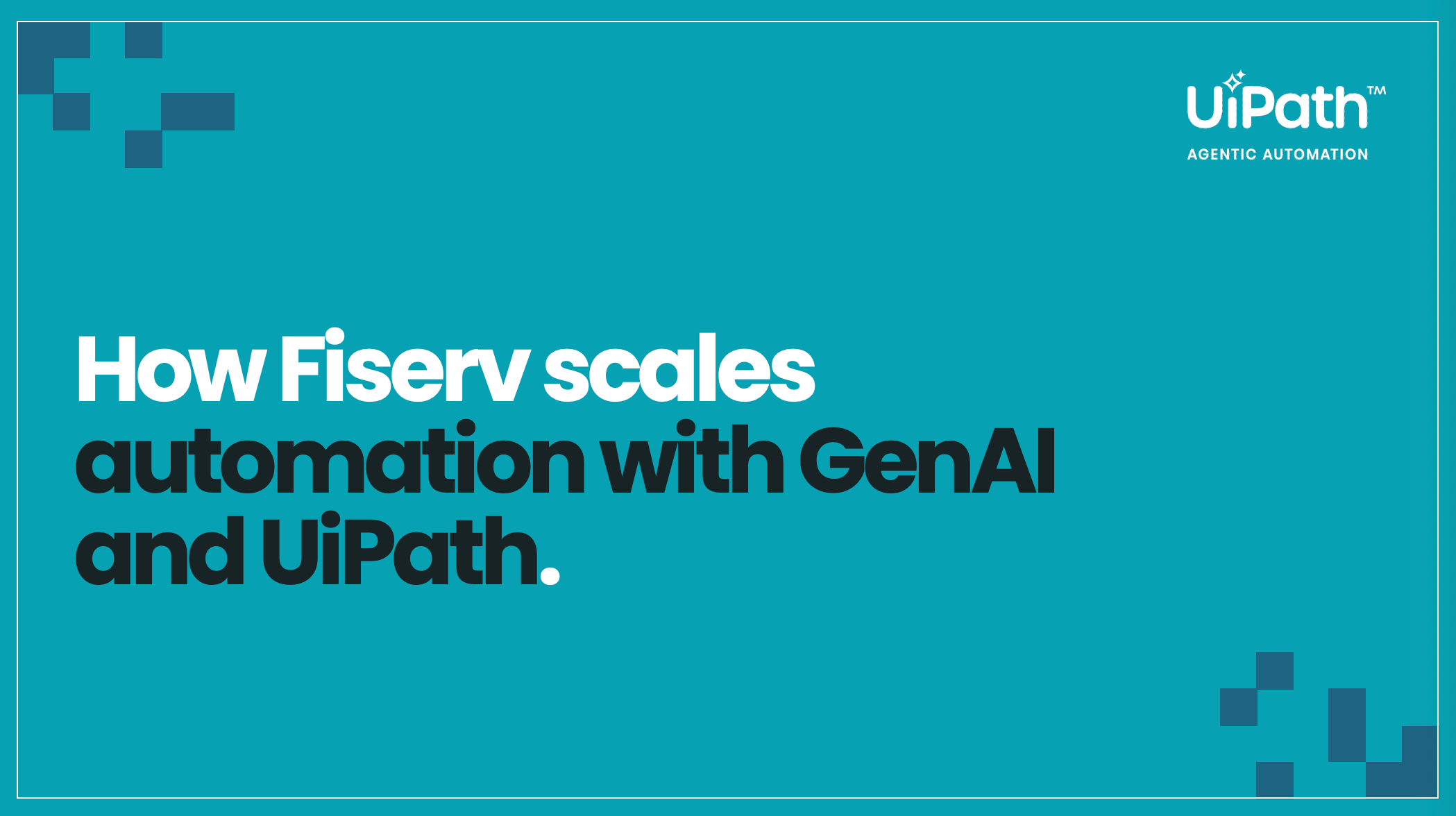Still running AI agents and RPA in silos in financial services? You’re leaving value on the table.
Still running AI agents and RPA in silos in financial services? You’re leaving value on the table.
Share at:

AI agents are undeniably gaining traction across financial services. From underwriting to fraud detection, teams are racing to launch pilots, test new use cases, and explore how AI agents can transform their part of the business. But in many cases, these efforts are unfolding in silos—disconnected from broader automation initiatives, existing tech infrastructure, and sometimes even from the teams that have been leading enterprise transformation for years.
That fragmentation is starting to show. Budgets are being duplicated. Capabilities are rebuilt from scratch when they already exist elsewhere in the organization. And without a clear governance model or shared KPIs, it’s getting harder to measure what’s delivering value—and what’s just noise.
It doesn’t have to be this way. Financial services institutions that are best positioned to scale and monetize agentic AI aren’t starting over—they’re converging. Specifically, they’re aligning investments with the well-established automation programs they’ve already built over the past decade. That includes RPA, workflow automation, and broader transformation teams who know how to scale technology with discipline, governance, and results.
The best-performing organizations in this space are ones that combine these capabilities into a single operating model, eliminating duplication, combining intake and value realization, and driving sustainable growth and competitive advantage through disciplined governance and continuous optimization.
RPA isn’t going anywhere—but agentic AI is making it smarter
AI agents aren’t here to replace RPA. AI agents are improving automation through 'agentic automation' by giving it more contextual awareness and decision making capabilities. RPA remains a highly controllable, structured, and enterprise-hardened way to get things done. What agentic AI adds is intelligence: the ability to interpret unstructured inputs, make real-time decisions, and adapt to nuance. But AI without a delivery mechanism often stalls. The reverse is also true—RPA without intelligence can hit limits in complex environments and prevent workflows from being automated end-to-end.
Together, agentic AI and RPA deliver more complete, resilient, and measurable outcomes.
Don’t scrap the existing delivery structures—build on them
Many financial institutions already have the building blocks to do this well. RPA centers of excellence (CoEs), for example, have laid strong foundations for structure, scalability, and ROI. With clear governance, reusable frameworks, and funding models already in place, these teams don’t need to be rebuilt—they can evolve.
Bringing agentic AI into these operating models doesn’t mean slowing down innovation. It means channeling it into a model that already knows how to move from pilot to production. It means building a shared vision, a shared roadmap, and a shared understanding of what value looks like across teams.
It also means giving existing automation teams new room to grow. Many experienced RPA developers and business analysts are already looking for their next evolution—and agentic automation provides a natural path forward. With their deep knowledge of workflows, systems, and enterprise constraints, these professionals are well positioned to lead the charge into agent design, prompt engineering, and human-in-the-loop orchestration. Rather than starting over, organizations can invest in expanding skill sets and responsibilities—creating momentum, not friction.
The next wave of transformation won’t come from the tech alone
To succeed, financial institutions must treat every investment—whether in agentic AI or automation—as a business value initiative. That means prioritizing capabilities that can scale, that serve real business goals, and that can be tracked with measurable outcomes. Sometimes, that will involve complex AI models. Other times, the right answer might be a simple automation built with tools you already have. What matters most is the result—not the complexity.
As expectations rise and the pace of innovation accelerates, the winners will have aligned their tools, teams, and strategies to drive real, measurable impact—at scale.
Customer example: Fiserv
An early automation adopter, learn how Fiserv is driving tremendous value from RPA while combining it with enterprise-wide AI adoption.
For Fiserv, UiPath Robots extract merchant details from the database, cross check them via a Bing API, and select the correct MCC codes using generative AI prompts from UiPath GenAI Activities. Validation rules handle 98% of cases, with outliers sent to UiPath Action Center for review. UiPath Autopilot™ troubleshoots MCC automation workflows by identifying errors and optimizing performance. Fiserv also is exploring Autopilot to streamline contract processes for its service level agreement team.

Learn more about Fiserv’s automation journey.
How do financial services firms make the best use of these technologies?
To fully unlock the value of your AI and RPA investments, you must bridge the gap between the two and create a unified strategy that aligns innovation with business outcomes. Combining AI’s decision making capabilities with RPA’s executional strength leads to a more cohesive, scalable solution that drives measurable results—whether through direct business value, such as cost reduction and revenue generation, or indirect value like enhanced customer service and regulatory compliance.
Financial services institutions that strategically combine these technologies are not just staying competitive—they are building a self-sustaining cycle of growth and innovation.
Ready to explore how to bring AI and RPA together in your organization? Download the State of Automation white papers today:

Regional Vice President - FINS, UiPath
Get articles from automation experts in your inbox
SubscribeGet articles from automation experts in your inbox
Sign up today and we'll email you the newest articles every week.
Thank you for subscribing!
Thank you for subscribing! Each week, we'll send the best automation blog posts straight to your inbox.



